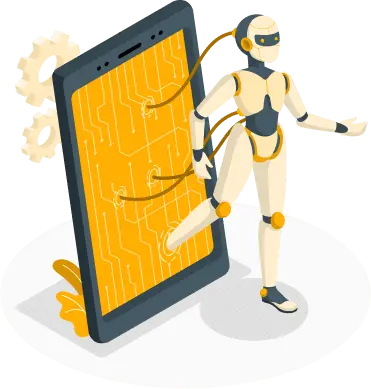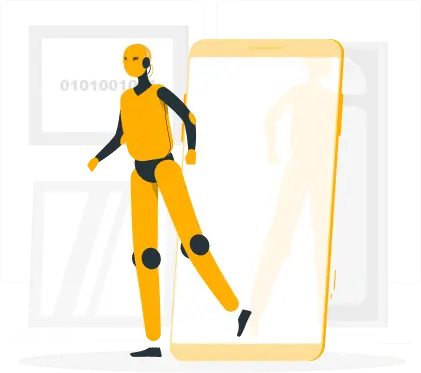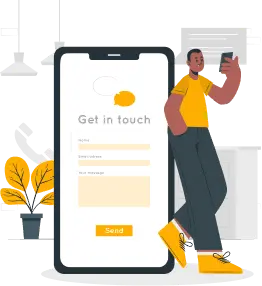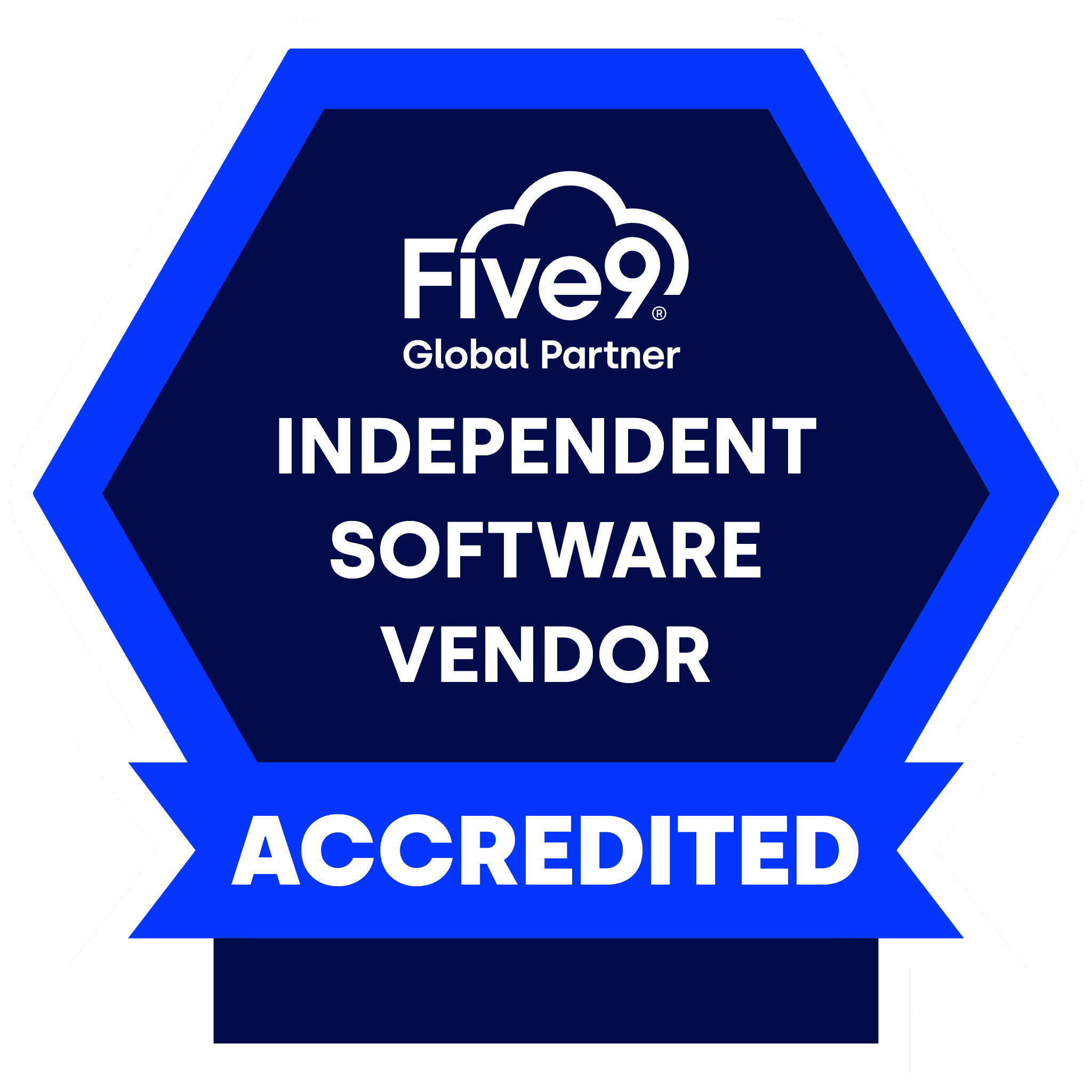IVA vs IVR: Which Is Right For Your Business?
Discover the vital differences between IVA vs IVR systems in call centers. Learn how Razor can boost customer service and streamline operations.


As the digital revolution accelerates, businesses are perpetually looking for technology that can simplify operations and enhance the customer experience.
Two technologies consistently mentioned in these conversations are Interactive Voice Response (IVR) and Intelligent Virtual Assistants (IVA), both pivotal in streamlining call flow and providing self-service solutions. Despite having similar goals, these systems differ vastly in their approach to automating customer contact applications.
To help you navigate the IVA and IVR landscape, we delve deeper into these technologies and explore which solution, whether traditional IVR or a more advanced IVA, would best serve your contact center needs.
What is IVR?
Interactive Voice Response (IVR) is a telephony system that can be integrated into your CRM to offer automated interaction with callers. It uses pre-recorded voice prompts and menus, serving as a convenient channel for customers to self-serve or be guided to the appropriate department.
IVR technology is a stalwart in contact centers with high call volumes, acting as customers’ initial point of contact. A long call queue can lead to a high call abandonment rate, which means fewer conversions. Instead of hiring people to manage high call volumes, you use IVR solutions for call management.
Depending on the options provided, a caller can get information or perform simple tasks using a touch-tone keypad or voice commands. For instance, a customer might check account balances, pay bills, or get business operating hours using IVR. However, for more complex requests that the IVR system cannot handle, the call gets directed to a live agent.
By reducing the need for live agents to handle routine queries, IVR helps save both the customer’s time and the company’s resources. Because phone lines are always manned, there is less call abandonment due to long wait times when call volumes are high.


What is IVA?
Intelligent Virtual Assistant (IVA) is a leap forward from IVRs. Infused with artificial intelligence (AI), the IVA software delivers customers personalized, real-time voice and text responses.
The primary difference between IVR solutions and IVAs is the intelligence level of the responses. IVAs gain natural language understanding (NLU) through natural language processing (NLP), sentiment analysis, and speech recognition. With NLU, they can replicate human conversations and interactions. They may also have voice biometrics recognition technology to safeguard account information.
These AI-driven intelligent virtual agents can converse, resolve queries, and even learn from past interactions to enhance future responses. The ability to interact across various channels, including web, mobile apps, and social media, marks a significant shift from IVR, enabling a more integrated customer service experience.
IVA vs IVR: The Differences
Choosing between IVR and IVA isn’t quite as simple. IVA isn’t a magic wand that will fix your existing IVR problems. Before upgrading from IVRs to IVAs, you must understand how they differ.
The key difference between IVR and IVA, despite their shared objective of making the experience better for the customer and contact center operations smoother, is in their functionality. IVA offers conversational AI, which can go beyond fixed scripts and adapt to situations to offer a flexible, responsive solution.
The contact center IVA solution is a testament to the strength of natural dialogue designs, progressive disclosure shadow prompts, turn-taking confirmation yes-no, and the use of DTMF tones in traditional IVR systems.
IVR technology offers a fixed menu of options to callers. It requires the customer to make choices using a touch-tone keypad or voice commands matching pre-set prompts.
IVA software, on the other hand, uses speech recognition technology to provide dynamic, conversational interactions. It employs AI and machine learning algorithms to comprehend customer queries, context, and sentiment, thereby offering interactive and conversational responses.
Benefits of IVR
IVR has stood the test of time, offering businesses considerable cost savings and efficiency. By handling routine tasks, it allows live agents to focus on more complex customer issues, improving overall productivity. It’s a practical tool for organizations facing a high volume of repetitive customer inquiries, routing callers to the best contact center agents for their requirements.
Drawbacks of IVR
Despite their proven benefits, these systems have limitations. The static IVR menu can frustrate customers if it fails to address their specific issues. Relying on touch-tone inputs or pre-determined voice commands can also feel restrictive and lead to customer dissatisfaction. If the IVR setup isn’t integrated with other systems, it could lack context about the caller’s history, leading to a disjointed customer experience.
If these are problems you’re facing, you should consider upgrading to an IVA system.

Benefits and Drawbacks of Using IVA
Benefits of IVA
IVAs leverage natural language processing to understand and respond to user queries more intuitively, providing a more human-like interaction. They can access and utilize customer data to deliver personalized responses and recommendations, improving customer satisfaction.
Since they are automated, IVA systems can operate around the clock, handling inquiries and tasks without requiring human intervention. They also improve efficiency, as automating routine inquiries and tasks allows live agents to focus on more complex and high-value interactions, enhancing overall productivity.
Drawbacks of IVA
Implementing and maintaining an IVA system can be more complex and costly compared to IVR systems, requiring advanced AI and machine learning capabilities. You may also have to deal with data privacy concerns. Handling large amounts of customer data raises potential privacy and security concerns, necessitating robust data protection measures.
The effectiveness of IVAs depends heavily on the quality and completeness of the data they are trained on. Poor data can lead to inaccurate responses and a subpar user experience. Despite advances in AI, IVAs can still misinterpret queries or fail to understand specific user accents or dialects. If that happens, it leads to errors and customer frustration.

Why Choose IVA over IVR?
IVA technology elevates customer service with its advanced features. By understanding and responding in natural language, IVAs offer an experience similar to interacting with a human agent.
An IVA’s ability to learn and adapt from prior interactions means a more personalized experience for customers.
The data analytics capabilities of an IVA contact center
offer valuable insights for businesses to refine their
services continually.
Despite the numerous benefits, the initial cost of setting up an IVA can be high. Moreover, IVA requires regular maintenance and updates to keep the AI and machine learning algorithms running at their best. Also, IVA’s reliance on natural language processing and AI might raise privacy concerns for some customers, especially in sensitive industries like healthcare or finance.
When To Use
IVR
IVR is an ideal choice for businesses dealing with a high volume of repetitive, straightforward customer inquiries.
IVR can be a cost-effective solution if most of your customer interactions don’t involve complex language recognition or advanced problem-solving skills. Automating routine tasks and efficiently routing calls can dramatically improve a business’s operational efficiency and productivity.
IVA
IVA is recommended for businesses seeking to provide a deeply personalized and interactive customer experience.
Does your call center grapple with complex customer issues, or your customer demographic lean towards conversational and natural interactions? If yes, then use IVA for your contact center. IVAs can handle providing multi-channel support and offering a consistent customer experience across all touchpoints very well.
How Razor Can Assist in Either Choice
No matter what your contact center solution is, it is crucial to ensure its seamless operation and peak performance.
Occam’s automated testing platform, Razor, is a proficient tool designed to identify and address potential issues before they reach your customers, thereby enhancing their overall experience.
This IVA case study highlights the importance of regular testing in maintaining high customer service standards. Let’s delve deeper into how Razor aids in each choice:


IVR Mapping and Documentation
Mapping and documentation form the
backbone of any IVR system. They are an exhaustive
visual representation of a caller’s journey through
the system.
Razor assists in creating and updating these maps, ensuring all possible caller paths are accurate and up to date. Furthermore, Razor verifies each point in the IVR map, ensuring the correct options are provided at the right moments.
The platform can also validate the accuracy of the documentation to confirm that all options, prompts, and paths are correctly recorded. These actions lead to a robust and reliable IVR system — one that reduces the chance of customer dissatisfaction due to incorrect routing or unavailable options.
IVR vs IVA Monitoring
Razor can also be used for continuous monitoring of your system, ensuring optimal call routing and self-service efficiency instead of manually examining each component. It can run at regular intervals, ensuring that all aspects of the system are functioning as expected.
For instance, Razor might run every hour, testing the main pathways a caller might take through the system. If any problems are detected, the relevant team can be alerted immediately, allowing them to resolve the issue before it impacts a significant number of callers.

Functionality Testing
Functionality testing involves examining the core functionalities of the IVR or IVA system.
For IVR, this means validating the various response options, like pressing a key or speaking a command.
For IVA, it could be verifying the assistant’s ability to understand a variety of phrases and sentences.
Razor simplifies functionality testing by automatically assessing a range of inputs and confirming their outputs. It also supports variable response testing, where the system is tested with a wide array of inputs to ensure it responds correctly in each case.
Razor can also perform live audio matching, which verifies the system’s ability to correctly interpret voice commands. By comparing the user’s command with the system’s interpretation, Razor can validate that the system is correctly recognizing and responding to audio inputs.

Load Testing
Load testing is a crucial form of testing for any call center application. It involves testing the system under heavy loads to ensure it can handle a large number of simultaneous callers without performance degradation.
Razor simplifies load testing by simulating hundreds or even thousands of calls at once. This process helps identify potential bottlenecks and assess the system’s capacity. Thus, businesses can plan for peak call times and ensure that their IVR or IVA system continues to provide excellent service even under high load conditions.

Choosing Between IVA vs IVR
The choice between IVR and IVA should align with your business needs, customer expectations, and resource availability.
The ultimate goal is to provide efficient, reliable, and satisfactory customer service. Both technologies, when implemented correctly and maintained regularly, can greatly enhance your contact centre operations, improve agent productivity, and elevate customer satisfaction levels.
Making an informed choice between IVR and IVA could significantly impact your customer service delivery and, by extension, your business success.




